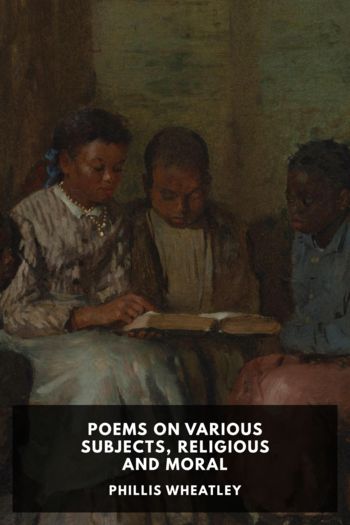Malaria and Rome: A History of Malaria in Ancient Italy, Robert Sallares [reading a book TXT] 📗

- Author: Robert Sallares
Book online «Malaria and Rome: A History of Malaria in Ancient Italy, Robert Sallares [reading a book TXT] 📗». Author Robert Sallares
Of course it can be argued that the situation in Florence in 1427
was exceptional because of the effects of massive plague epidemics.
Nevertheless the fact remains that the first major source of quanti-fiable demographic information in Italian history provides no support whatsoever for the hypothesis that model life-tables based on data from normal modern populations are likely to be useful for ancient populations afflicted by diseases which are no longer endemic in modern Europe. Moreover the situation in antiquity was itself not static, since disease evolution and history is a never-ending process. The spread of malaria in Italy in the first millennium created new demographic patterns in both time and space. The demographic patterns of much of Latium and Etruria in the first century were probably completely different from what they had been in the seventh century .
There is yet another methodological issue of fundamental importance at stake here. Hopkins entitled his well-known article ‘ On the probable age-structure of the Roman population’. This begs the question of whether the Roman population had an age-structure.
Or, to put the question more precisely, making explicit a crucial assumption implicitly made by Hopkins, did the Roman population as a whole have a single age-structure? The answer to that question ⁴³ Coale and Demeny (1983: 33) stated that ‘any extraordinary incidence of a cause of death that is highly age-and-sex specific produces a mortality schedule that naturally does not conform to the model tables’. Populations affected by malaria evidently fall into this category.
⁴⁴ Herlihy and Klapisch-Zuber (1985: 195).
Geographical contrasts
285
must be no, taking account of the prevalence in historical populations of the type of regional variation which has been discussed here. The inference is clear. The age-structure of the Roman population is an illegitimate concept. The homogeneity of modern populations is a consequence of the process of modernization.
Only an anachronistic, modernizing approach to ancient history can imagine such homogeneity in ancient populations.
This page intentionally left blank
R E F E R E N C E S
Adekile, A. D. (1992). ‘Anthropology of the bs gene-flow from west Africa to north Africa, the Mediterranean, and southern Europe’, Hemoglobin, 16: 105–21.
Agricoltura e società nella Maremma grossetana dell ’800 (1980). Biblioteca Storica Toscana, iv. (Florence).
Aitken, L. (1873). ‘The sanitary state of Rome’, British Medical Journal, 1: 311–12.
Alexander, D. (1984). ‘The reclamation of Val-di-Chiana (Tuscany)’, Annals of the Association of American Geographers, 74: 527–50.
Amadouny, V. M. (1997). ‘The campaign against malaria in Transjordan, 1926–1946: epidemiology, geography, and politics’, Journal of the History of Medicine and Allied Sciences, 52: 453–84.
Ammerman, A. J. (2000). ‘Coring ancient Rome’, Archaeology, 53/6: 78–83.
Ampolo, C. (1976). ‘Demarato, osservazioni sulla mobilità sociale arcaica’, Dialoghi di Archeologia, 10: 333–45.
—— (1980). ‘Le condizioni materiali della produzione: agricoltura e paesaggio agrario’, Dialoghi di Archeologia, , 2: 15–46.
Amulree, Lord (1973). ‘Hygienic conditions in ancient Rome and modern London’, Medical History, 17: 244–55.
Andersen, H. C. (1845). The improvisatore: or, life in Italy, Eng. trans., 2 vols.
(London).
Anderson, B. B., Scattoni, M., Perry, G. M., Galvan, P., Giuberti, M., Buonocore, G., and Vullo, C. (1994). ‘Is the flavin-deficient red blood cell common in Maremma, Italy, an important defence against malaria in this area?’, American Journal of Human Genetics, 55: 975–80.
—— Corda, L., Perry, G. M., Pilato, D., Giuberti, M., and Vullo, C.
(1995). ‘Deficiency of two red-cell flavin enzymes in a population in Sardinia: was glutathione reductase deficiency specifically selected for by malaria?’, American Journal of Human Genetics, 57: 674–81.
Anderson, R. M. and May, R. M. (1991). Infectious diseases of humans: dynamics and control (Oxford).
Angel, J. L. (1966). ‘Porotic hyperostosis, anaemias, malarias, and marshes in the prehistoric eastern Mediterranean’, Science, 153: 760–3.
Anon. (1793). Discorso sopra la mal’aria, e le malattie, che cagiona principalmente in varie spiaggie d’Italia e in tempo di estate (Rome).
Arlacchi, P. (1983). Mafia, peasants and great estates: society in traditional Calabria (Cambridge).
288
References
Armand-Delille, P., Abrami, P., Lemaire, H., and Paisseau, G. (1918).
Malaria in Macedonia (London).
Arrizabalaga, J., Henderson, J., and French, R. (1997). The great pox: the French disease in Renaissance Europe (New Haven).
Ascenzi, A. and Balistreri, P. (1977). ‘Porotic hyperostosis and the problem of origin of thalassaemia in Italy’, Journal of Human Evolution, 6: 595–604.
Ashby, T. (1927). The Roman Campagna in classical times (London).
Astolfi, P., Tagarelli, A., Degioanni, A., and Lisa, A. (1997). ‘Women’s fertility contributes to the maintenance of the G6PD polymorphism’, in Greene and Danubio (eds.) (1997), 271–92.
—— Lisa, A., Degioanni, A., Tagarelli, A., and Zei, G. (1999). ‘Past malaria, thalassaemia and woman fertility in southern Italy’, Annals of Human Biology 26: 163–73.
Attema, P. (1993). An archaeological survey in the Pontine region. i. Text. A contribution to the early settlement history of south Lazio 900–100 BC PhD thesis (Groningen).
—— (1996). ‘Inside and outside the landscape: perceptions of the Pontine region in central Italy’, Archaeological Dialogues, 3: 176–95.
—— (1997). ‘Notes on the urbanization of Latium vetus’, Acta Hyperborea, 7: 279–95.
—— Delvigne, J., and Haagsma, B.-J. (1999). ‘Case studies from the Pontine region in central Italy on settlement and environmental change in the first millennium ’, in Leveau, P., et al. (eds.), Environmental reconstruction in Mediterranean landscape archaeology (Oxford), 105–21.
Austen, E. E. (1901). ‘The genus Anopheles’, Practitioner, 66: 334–47.
Ayala, F. J. and Rich, S. M. (2000). ‘Genetic variation and the recent worldwide expansion of Plasmodium falciparum’, Gene, 261: 161–70.
—— Escalante, A. A., and Rich, S. M. (1999). ‘Evolution of Plasmodium falciparum and the recent origin of the world populations of Plasmodium falciparum’, Parassitologia, 41: 55–68.
Babiker, H. A. and Walliker, D. (1997). ‘Current views on the population structure of Plasmodium





Comments (0)